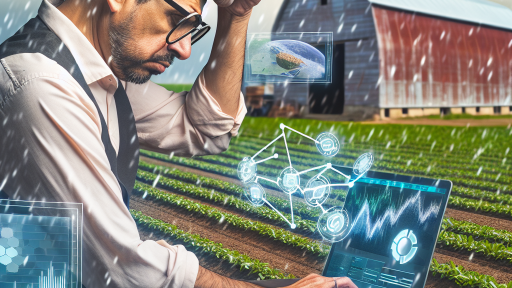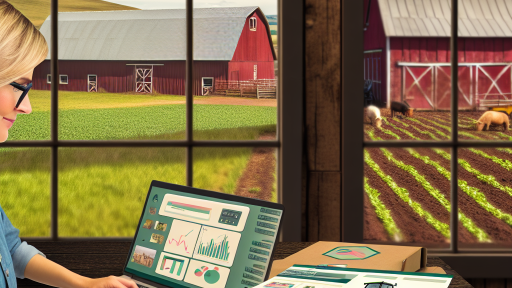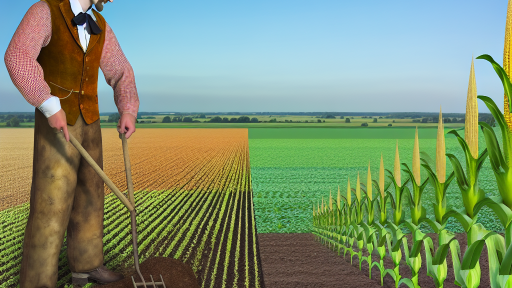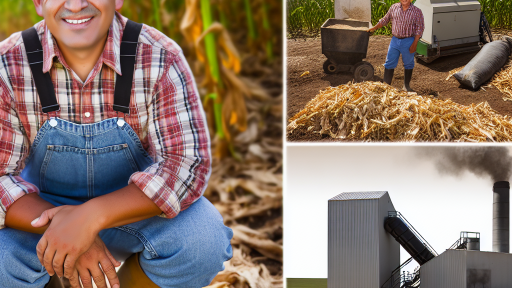Introduction to Automated Farming Equipment and Its Importance
Automated farming equipment revolutionizes modern agriculture.
It enhances efficiency, productivity, and sustainability across farms.
Farmers increasingly rely on automation for various tasks.
This technology simplifies labor-intensive processes.
As a result, it reduces the need for manual labor in many situations.
Benefits of Automation in Agriculture
Automation provides several key advantages for farmers.
Firstly, it markedly increases operational efficiency.
Tasks that once required hours can now be completed in minutes.
Moreover, automation minimizes human error.
This leads to higher-quality produce and lower waste levels.
Types of Automated Equipment
A wide range of automated equipment is available today.
Robotic harvesters efficiently gather crops at peak ripeness.
GPS-guided tractors optimize land usage and reduce overlap.
Additionally, drones enable precise monitoring of crop health.
These technologies are transforming traditional farming practices.
Transform Your Agribusiness
Unlock your farm's potential with expert advice tailored to your needs. Get actionable steps that drive real results.
Get StartedThe Role of Data in Automated Farming
Data plays a critical role in maximizing automation benefits.
Farmers use data to inform decision-making processes.
Real-time analytics helps optimize planting and harvesting schedules.
Furthermore, historical data aids in forecasting yields.
These insights guide operational adjustments for improved profitability.
Sustainability and Environmental Impact
Automated farming equipment promotes sustainable practices.
It enables efficient resource usage, minimizing waste.
For instance, precision irrigation systems conserve water effectively.
Also, these technologies support soil health by reducing compaction.
Ultimately, they foster a more sustainable agricultural future.
Types of Automated Farming Equipment and Their Roles in Modern Agriculture
Overview of Automated Farming Equipment
Automated farming equipment revolutionizes agricultural practices.
This machinery enhances efficiency and productivity.
It relies heavily on technology to streamline operations.
Farmers increasingly adopt these tools to improve profitability.
Types of Automated Farming Equipment
Several types of automated farming equipment exist today.
Each type serves a specific role in the agricultural process.
- Autonomous tractors
- Drone technology
- Precision planting machines
- Harvesting robots
- Irrigation automation systems
Autonomous Tractors
Autonomous tractors operate without direct human intervention.
These machines perform tasks such as plowing and seeding.
They utilize GPS technology for accurate navigation.
This results in increased efficiency in field operations.
Drone Technology
Drones offer unique benefits in modern agriculture.
They provide aerial imagery to monitor crop health.
Farmers use drones for precision spraying and mapping.
This technology enhances decision-making and resource management.
Showcase Your Farming Business
Publish your professional farming services profile on our blog for a one-time fee of $200 and reach a dedicated audience of farmers and agribusiness owners.
Publish Your ProfilePrecision Planting Machines
Precision planting machines optimize the planting process.
They ensure correct seed spacing and depth.
This leads to improved crop yields and reduced waste.
Farmers can thereby maximize the use of land resources.
Harvesting Robots
Harvesting robots automate the collection of crops.
These machines operate efficiently and minimize labor costs.
They can harvest multiple types of crops simultaneously.
This flexibility accounts for seasonal demands and variations.
Irrigation Automation Systems
Irrigation automation systems conserve water use in farming.
They monitor soil moisture levels in real time.
This technology automates watering schedules accordingly.
Farmers experience significant reductions in water waste.
Integration of Technology in Farming
Integrating automated equipment enhances overall farm management.
Farmers gain better insights into their agricultural processes.
Strategies based on data allow for precision agriculture.
This leads to informed decision-making and improved outcomes.
Cost-Benefit Analysis
Initial Investments
Automated farming equipment requires substantial initial investments.
Farmers often face significant costs when purchasing advanced machinery.
These costs can include not just the equipment itself but also installation and training.
For example, a high-tech tractor can represent a major expense.
However, many farmers view this as a necessary expense.
Investing in automation can position farms for future success.
Long-Term Savings
While initial investments are high, the long-term savings can be substantial.
Automated equipment often leads to reduced labor costs.
By utilizing machinery, farms can operate with fewer employees.
Additionally, automation enhances efficiency in operations.
Less time spent on tasks can lead to increased crop yields.
Furthermore, automated systems can minimize waste during farming processes.
Return on Investment
Calculating the return on investment is critical for farmers.
It helps farmers make informed decisions about the adoption of new technologies.
Many automated systems offer data analytics for better insight.
With this data, farmers can identify areas for improvement and growth.
Over time, these small improvements compound to significant cost savings.
Case Studies of Successful Implementation
Successful automation examples provide clear benchmarks for ROI.
For instance, GreenValley Farms saw an increase in productivity by 30% after automation.
Additionally, Riverbend Orchards reduced labor costs by 25%.
Both farms improved their profitability significantly.
These case studies highlight the potential benefits of automation.
Factors to Consider
Several factors influence the cost-benefit analysis.
Farm size and type of crops play major roles in equipment selection.
Showcase Your Farming Business
Publish your professional farming services profile on our blog for a one-time fee of $200 and reach a dedicated audience of farmers and agribusiness owners.
Publish Your ProfileEconomic conditions also affect initial investment feasibility.
Moreover, ongoing maintenance costs are another consideration.
Farmers must evaluate all these aspects to make sound decisions.
Explore Further: Leveraging Blockchain To Reduce Costs In Agricultural Supply Chains
How Automation Increases Efficiency in Crop Management
Improved Precision in Planting
Automated farming equipment enhances precision in planting crops.
These machines optimize seed placement for better germination.
Farmers can customize planting parameters for different crops.
Consequently, this leads to higher yields per acre.
Enhanced Resource Management
Automation streamlines resource usage in agriculture.
Farmers can monitor soil moisture levels accurately.
This allows for targeted irrigation, conserving water.
Additionally, automated systems minimize fertilizer waste.
Real-Time Data Collection
Advanced sensors on farming equipment provide real-time data.
This data helps farmers make informed decisions quickly.
They can adjust practices based on immediate crop needs.
As a result, crop health improves significantly.
Reduced Labor Costs
Automation decreases reliance on manual labor.
With fewer workers needed, labor costs drop substantially.
Moreover, machines can operate at any hour, increasing productivity.
Farmers can focus on strategic tasks and planning.
Scalability of Operations
Automated systems allow farmers to scale operations efficiently.
They can manage larger plots of land with ease.
Increased efficiency supports growth without overwhelming resources.
Ultimately, this drives profitability in agricultural businesses.
Explore Further: Enhancing Soil Health Through Drone-Assisted Farming
The Role of Data Analytics in Enhancing Agricultural Yield
Understanding Data Analytics in Agriculture
Data analytics transforms the agricultural landscape effectively.
This approach involves collecting large volumes of data.
Farmers can analyze this data to enhance productivity.
Moreover, data analytics helps to identify optimal planting times.
It also supports precision farming techniques efficiently.
Benefits of Data-Driven Decision Making
Data-driven decision making improves farm management outcomes.
For instance, it enables farmers to optimize resource usage.
Farmers can reduce waste and costs significantly.
Additionally, it enhances yield predictions accurately.
Data analytics facilitates quick response to market changes.
Tools and Technologies in Agricultural Analytics
Modern farming utilizes advanced tools for data collection.
Farmers use sensors, drones, and satellite imagery.
These technologies gather real-time data from fields.
Moreover, software solutions analyze this data efficiently.
Farmers can access insights through mobile applications readily.
Showcase Your Farming Business
Publish your professional farming services profile on our blog for a one-time fee of $200 and reach a dedicated audience of farmers and agribusiness owners.
Publish Your ProfileCase Studies of Successful Implementation
Many farms have successfully integrated data analytics.
For example, Green Harvest Farms used analytics to improve yields.
They enhanced water management practices through data insights.
Another example is Sunny Fields, which optimized crop rotation.
They experienced a 30% increase in overall yield.
Challenges in Adopting Data Analytics
Despite its benefits, challenges exist in data analytics adoption.
Many farmers struggle with the initial investment costs.
Additionally, there may be a lack of technical expertise.
Data security and privacy also pose significant concerns.
Furthermore, integrating data from various sources can be complex.
See Related Content: How Agri-Fintech Is Improving Access To Credit And Financing For Farmers
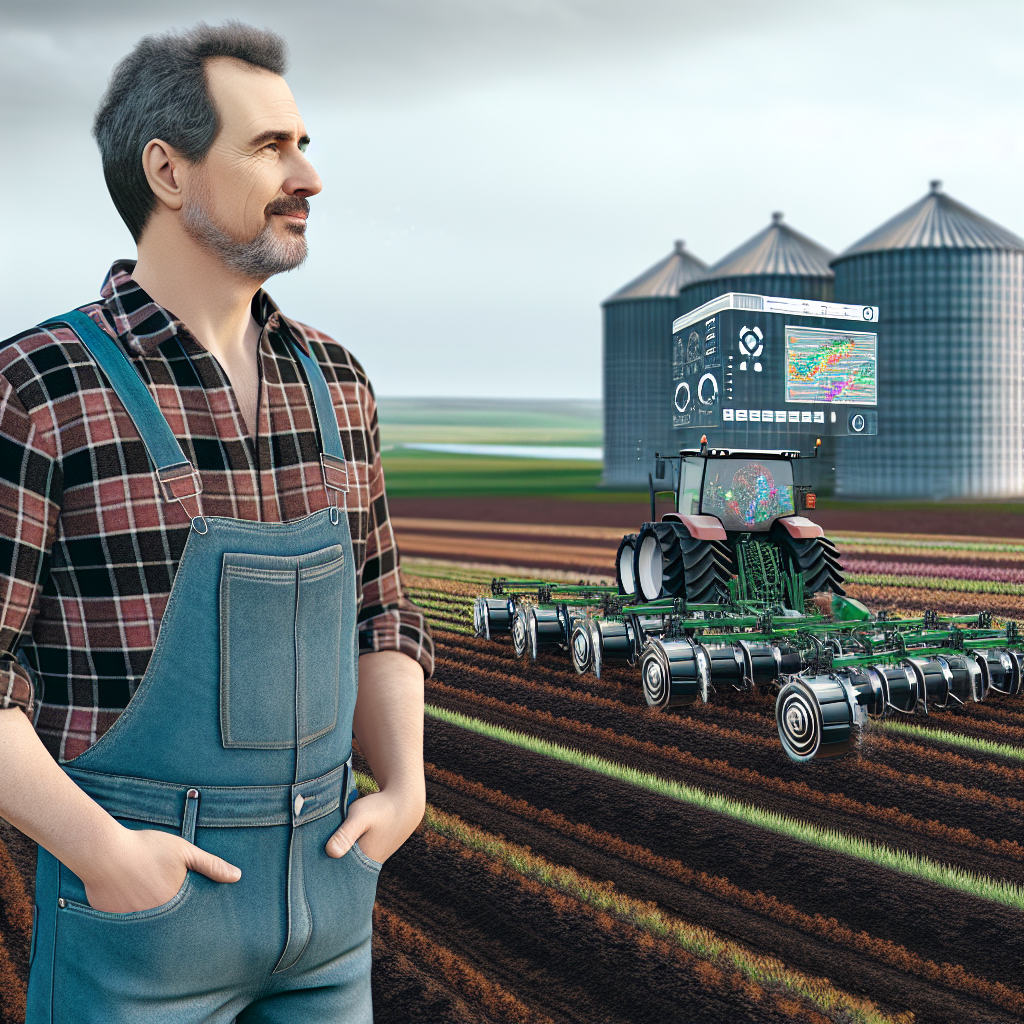
Case Studies: Successful Implementations of Automated Farming Equipment
Introduction to Case Studies
Automated farming equipment significantly transforms agricultural practices.
Many farmers report higher yields due to increased efficiency.
These case studies showcase successful implementations.
Example of Precision Agriculture
Green Fields Farm experienced remarkable success with precision farming technology.
They adopted GPS-guided tractors to maximize crop planting efficiency.
This approach reduced seed waste and optimized planting patterns.
As a result, Green Fields reported a 15% increase in yield.
Robot-Assisted Harvesting
Sunnydale Orchards integrated robotic harvesters into their operations.
These machines harvest fruit at optimal ripeness and speed.
Consequently, labor costs decreased while harvest quality improved.
Sunnydale noted a 20% reduction in harvesting time.
AI-Driven Irrigation Systems
FarmTech Innovations implemented AI-driven irrigation systems.
This system allows for precision water delivery to crops.
By utilizing soil moisture sensors, water usage decreased significantly.
FarmTech saved 30% on water costs with this implementation.
Drones for Crop Monitoring
SkyView Farms adopted drone technology for crop monitoring.
Drones provide timely data on crop health and soil conditions.
This allows for quick interventions when issues arise.
SkyView increased overall crop resilience and reduced waste.
Integrated Data Systems
AgroLink launched an integrated data management system.
This platform centralizes information from various automated equipment.
Farmers gain valuable insights into planting schedules and yield forecasts.
This improved decision-making benefits overall farm productivity.
Implications of Automated Farming Innovations
Each case study illustrates the benefits of automated farming equipment.
Through these innovations, farmers enhance productivity and profitability.
Investing in technology yields significant long-term rewards.
Gain More Insights: The Impact Of Biotechnology On Sustainable Farming
Challenges and Considerations in Adopting Automated Solutions
Initial Investment Costs
Automated farming equipment often requires a significant initial investment.
This upfront cost can be daunting for many farmers.
Showcase Your Farming Business
Publish your professional farming services profile on our blog for a one-time fee of $200 and reach a dedicated audience of farmers and agribusiness owners.
Publish Your ProfileMoreover, financing options may vary widely depending on location.
Farmers must weigh the long-term savings against immediate expenses.
Technical Expertise Requirements
Using automated systems demands a certain level of technical expertise.
Many farmers may lack necessary skills or experience.
Training programs can help bridge this knowledge gap.
Partnerships with tech providers may offer additional support.
Maintenance and Repairs
Automated equipment requires regular maintenance to function effectively.
Farmers should be prepared for potential repair costs.
Furthermore, delays in repairs can disrupt farming operations.
Maintaining relationships with reliable service providers is essential.
Data Security and Privacy Concerns
Automated solutions often rely on data collection and analysis.
This raises important questions about data security and privacy.
Farmers must ensure their data is protected from breaches.
Clear policies regarding data usage can help mitigate risks.
Integration with Existing Systems
Farmers may face challenges integrating new technology with existing systems.
Compatibility issues can arise between different devices and software.
Planning and consultation are crucial before implementation.
Successful integration can enhance overall efficiency.
Market Acceptance and Customer Education
Transitioning to automated farming also requires market acceptance.
Consumers may be wary of products from automated processes.
Educating customers about benefits can help alleviate concerns.
Building trust in automated processes can lead to greater demand.
Future Trends in Agricultural Automation and Their Impact on Profitability
Advancements in Technology
Automation technology continues to evolve rapidly in agriculture.
Innovations in robotics are changing how farms operate.
Many farms now use drones for surveying fields and monitoring crop health.
This technology allows farmers to make informed decisions effectively.
Additionally, autonomous tractors can handle planting and harvesting tasks.
These advancements improve efficiency and reduce labor costs.
As a result, profitability increases for farmers adopting these tools.
Data-Driven Decision Making
Data analytics is playing a crucial role in modern farming.
Farmers can now analyze soil conditions and crop performance through various sensors.
This information guides planting schedules and resource allocation.
Furthermore, predictive analytics helps anticipate market trends and demand.
Effective use of data allows farmers to optimize yield and minimize waste.
Consequently, this leads to enhanced profitability across agricultural systems.
Integration of AI and Machine Learning
Artificial intelligence is transforming agricultural practices.
Machine learning algorithms can predict weather patterns and their effects on crops.
This enables proactive management of farming operations.
Also, AI-driven systems aid in precision agriculture, targeting specific field areas.
This targeted approach minimizes resource wastage significantly.
Showcase Your Farming Business
Publish your professional farming services profile on our blog for a one-time fee of $200 and reach a dedicated audience of farmers and agribusiness owners.
Publish Your ProfileOverall, AI integration in farming drives efficiencies and cost savings.
Regenerative Agriculture Practices
Regenerative practices are gaining traction in automated farming.
These methods focus on restoring soil health and biodiversity.
Farmers applying these practices can reduce chemical inputs.
Lower input costs contribute directly to improved profit margins.
Moreover, consumer demand for sustainably grown products is rising.
Meeting this demand through regenerative methods enhances marketability.
Challenges and Considerations
Adopting automated equipment does come with challenges.
Initial costs for technology can be substantial for some farmers.
Additionally, training personnel to operate new systems is essential.
There are also concerns about technological dependence in farming.
Farmers must balance innovation with sustainable practices.
However, the long-term benefits of automation can outweigh these challenges.
Additional Resources
Agriculture Innovation: 10 Tech Trends to Watch in 2023 …
AI in Agriculture and Farming: Revolutionizing Crop Growth – Intellias

